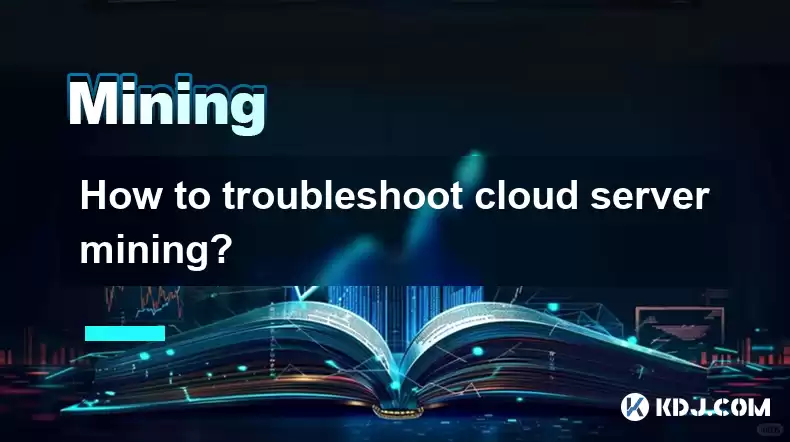-
 Bitcoin
Bitcoin $116800
1.37% -
 Ethereum
Ethereum $3832
5.15% -
 XRP
XRP $3.063
2.69% -
 Tether USDt
Tether USDt $1.000
0.04% -
 BNB
BNB $774.1
0.84% -
 Solana
Solana $170.7
1.56% -
 USDC
USDC $0.0000
0.01% -
 Dogecoin
Dogecoin $0.2142
5.31% -
 TRON
TRON $0.3406
1.90% -
 Cardano
Cardano $0.7635
3.81% -
 Hyperliquid
Hyperliquid $39.55
2.42% -
 Sui
Sui $3.732
7.71% -
 Stellar
Stellar $0.4127
4.25% -
 Chainlink
Chainlink $17.80
6.91% -
 Bitcoin Cash
Bitcoin Cash $576.7
1.66% -
 Hedera
Hedera $0.2521
3.28% -
 Ethena USDe
Ethena USDe $1.001
0.01% -
 Avalanche
Avalanche $22.66
2.19% -
 Litecoin
Litecoin $121.3
2.98% -
 UNUS SED LEO
UNUS SED LEO $8.959
-0.31% -
 Toncoin
Toncoin $3.325
2.88% -
 Shiba Inu
Shiba Inu $0.00001263
2.84% -
 Uniswap
Uniswap $10.11
4.79% -
 Polkadot
Polkadot $3.769
3.22% -
 Dai
Dai $1.000
0.01% -
 Bitget Token
Bitget Token $4.413
1.46% -
 Monero
Monero $272.9
-4.98% -
 Cronos
Cronos $0.1488
4.22% -
 Pepe
Pepe $0.00001088
4.01% -
 Aave
Aave $273.0
4.73%
How to troubleshoot cloud server mining?
Effective cloud server mining troubleshooting involves identifying issues (connectivity, software, hardware), utilizing remote monitoring tools, and performing regular maintenance; understanding your provider's support is crucial.
Mar 21, 2025 at 04:42 pm

Key Points:
- Identifying the source of the problem is crucial for effective troubleshooting. This involves checking hardware, software, and network connectivity.
- Remote access and monitoring tools are essential for troubleshooting cloud servers.
- Common issues include connectivity problems, software malfunctions, and insufficient hashing power.
- Regular maintenance and updates minimize troubleshooting needs.
- Understanding your cloud provider's support resources is critical.
How to Troubleshoot Cloud Server Mining
Cloud server mining offers scalability and accessibility but introduces unique troubleshooting challenges. Issues can range from simple connectivity problems to complex hardware or software failures. Effective troubleshooting requires a systematic approach.
First, identify the problem. Is your mining software not running? Are you experiencing low hash rates? Is your server unresponsive? Pinpointing the specific issue narrows down the potential causes. Check your mining rig's logs for error messages – these often provide valuable clues.
Next, examine your hardware. Ensure your server's CPU, GPU, RAM, and network connection are functioning correctly. Check for overheating, which can significantly reduce performance and lead to crashes. Use remote monitoring tools to check temperatures and utilization levels. High temperatures often require adjustments to cooling systems or even hardware replacement.
Software problems are another common cause of mining issues. Ensure your mining software is up-to-date and correctly configured. Outdated software can have bugs that impact performance or stability. Incorrect configurations can prevent your miners from working optimally, or even prevent them from connecting to the mining pool.
Network connectivity is critical for cloud mining. A poor internet connection can significantly impact your mining performance, resulting in dropped connections and lost earnings. Test your network speed and stability using online tools. Ensure your server has a reliable and high-bandwidth connection to your mining pool. Firewall settings should also be checked to ensure they are not blocking the necessary ports.
Remote access tools allow you to manage and troubleshoot your cloud server remotely. Services like SSH (Secure Shell) provide command-line access, while remote desktop tools allow for graphical control. These tools enable you to monitor performance, check logs, and restart services without physically accessing the server.
Insufficient hashing power is a frequent concern. This could stem from several factors: underpowered hardware, inefficient mining software, or network issues. Consider upgrading your hardware, optimizing your mining software, or switching to a more efficient algorithm.
Regular maintenance is essential to prevent issues. This includes regularly updating your mining software, monitoring your server's hardware health, and backing up your data. Proactive maintenance minimizes the chances of encountering unexpected problems.
Understanding your cloud provider's support resources is crucial. Most providers offer documentation, FAQs, and support tickets. Familiarize yourself with these resources before encountering problems, and don't hesitate to contact support when needed.
Step-by-Step Troubleshooting Guide:
- Check your mining software logs: Look for error messages or warnings that indicate the problem's source.
- Verify network connectivity: Test your internet speed and check if your server can reach your mining pool.
- Monitor hardware temperatures: Use remote monitoring tools to ensure your server's components are not overheating.
- Update your mining software: Ensure you are using the latest version to benefit from bug fixes and performance improvements.
- Review your server's configuration: Check settings related to mining software, network connections, and security.
- Restart your mining software and server: A simple restart can often resolve temporary glitches.
- Contact your cloud provider's support: If the problem persists, seek assistance from their support team.
Common Questions and Answers:
Q: My cloud mining server is unresponsive. What should I do?
A: First, try to connect to your server via SSH or remote desktop. If you can't connect, there might be a network problem. Check your network configuration and internet connection. If the connection is fine, the server itself might be down. Contact your cloud provider's support.
Q: My hash rate is significantly lower than expected. What are the possible causes?
A: Low hash rates can result from various factors including: overheating hardware, outdated mining software, inefficient mining algorithms, network issues, or even malicious activity on the server. Check your hardware temperatures, update your software, and review your network connection.
Q: My cloud mining software keeps crashing. What steps can I take?
A: Software crashes often indicate bugs in the software, hardware issues (like overheating), or configuration problems. Check the software logs for error messages. Update your software to the latest version. Monitor hardware temperatures. If the problem persists, reinstall the software.
Q: How can I prevent future troubleshooting issues?
A: Regular maintenance is key. This includes updating your software, monitoring hardware health, backing up data, and proactively checking logs for potential problems. Also, ensure you have a robust and reliable internet connection.
Q: What are some common reasons for cloud mining server downtime?
A: Downtime can be caused by hardware failures, software errors, network issues, power outages at the data center, or even maintenance performed by your cloud provider. Always have a plan for handling downtime, including redundancy measures if possible.
Disclaimer:info@kdj.com
The information provided is not trading advice. kdj.com does not assume any responsibility for any investments made based on the information provided in this article. Cryptocurrencies are highly volatile and it is highly recommended that you invest with caution after thorough research!
If you believe that the content used on this website infringes your copyright, please contact us immediately (info@kdj.com) and we will delete it promptly.
- Ripple, Rail, and Stablecoin Payments: A $200M Power Play
- 2025-08-07 22:50:12
- Punisher Coin Presale: The Next $Trump? Aiming for 100x Gains!
- 2025-08-07 22:50:12
- Riding the Crypto Wave: Presale Cryptos, Cold Wallets, and the BTC Bull Run
- 2025-08-07 23:10:12
- Crypto's Wild Ride: Punisher Coin, Popcat, and the Meme Coin Mania
- 2025-08-07 23:10:12
- Bitcoin Price, XRP Prediction, Cryptocurrency: Navigating the Wild West of Digital Assets
- 2025-08-07 23:15:12
- WiMi, Quantum Computing, and AR Tech: Navigating the Future Today
- 2025-08-07 22:30:12
Related knowledge

What is "proof-of-work" and how does it relate to mining?
Aug 07,2025 at 02:03pm
Understanding the Concept of Proof-of-WorkProof-of-work (PoW) is a consensus mechanism used in blockchain networks to validate transactions and secure...

What are the differences between mining on Windows vs. Linux?
Aug 06,2025 at 11:29pm
Overview of Cryptocurrency Mining PlatformsCryptocurrency mining involves using computational power to solve complex cryptographic puzzles and validat...

How to use an old computer for cryptocurrency mining?
Aug 07,2025 at 12:42pm
Understanding the Feasibility of Using an Old Computer for MiningUsing an old computer for cryptocurrency mining may seem outdated, but it is still te...

Can you mine cryptocurrency using solar power?
Aug 07,2025 at 12:00am
Understanding the Basics of Cryptocurrency MiningCryptocurrency mining involves validating transactions on a blockchain network by solving complex cry...

How to build a mining rig inside a PC case?
Aug 06,2025 at 11:01pm
Understanding the Basics of a Mining Rig in a PC CaseBuilding a mining rig inside a PC case involves transforming a standard computer chassis into a d...

How to diagnose a faulty riser or cable in a mining rig?
Aug 07,2025 at 01:49am
Understanding the Role of Riser Cables in Mining RigsIn a cryptocurrency mining rig, riser cables serve as the bridge between the motherboard and the ...

What is "proof-of-work" and how does it relate to mining?
Aug 07,2025 at 02:03pm
Understanding the Concept of Proof-of-WorkProof-of-work (PoW) is a consensus mechanism used in blockchain networks to validate transactions and secure...

What are the differences between mining on Windows vs. Linux?
Aug 06,2025 at 11:29pm
Overview of Cryptocurrency Mining PlatformsCryptocurrency mining involves using computational power to solve complex cryptographic puzzles and validat...

How to use an old computer for cryptocurrency mining?
Aug 07,2025 at 12:42pm
Understanding the Feasibility of Using an Old Computer for MiningUsing an old computer for cryptocurrency mining may seem outdated, but it is still te...

Can you mine cryptocurrency using solar power?
Aug 07,2025 at 12:00am
Understanding the Basics of Cryptocurrency MiningCryptocurrency mining involves validating transactions on a blockchain network by solving complex cry...

How to build a mining rig inside a PC case?
Aug 06,2025 at 11:01pm
Understanding the Basics of a Mining Rig in a PC CaseBuilding a mining rig inside a PC case involves transforming a standard computer chassis into a d...

How to diagnose a faulty riser or cable in a mining rig?
Aug 07,2025 at 01:49am
Understanding the Role of Riser Cables in Mining RigsIn a cryptocurrency mining rig, riser cables serve as the bridge between the motherboard and the ...
See all articles

























































































